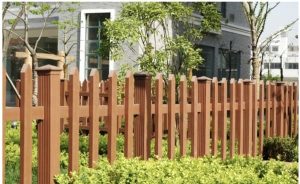There are two types of decking surfaces, grooved composite decking, and plain surface composite decking. When installed, the grooved surface faces upward to promote drainage and prevent water accumulation. The grooved side faces down to promote air circulation and prevent mold and mildew from collecting. Regardless of how it is installed, there are benefits to using the side with grooves.
The choice of outdoor decorative materials is as important as the choice of indoor decorative materials. Whether you consider wood plastic composite decking in terms of weather resistance, water resistance, fire resistance, or low maintenance and easy installation, it is a convenient and durable choice and a cost-effective one. Now that you know the superior performance of wood plastic composite decking, it’s time to make a choice among the various surfaces for your deck. After reading this article, you can know clearly about grooved decking and other decking without grooves.
Unifloor grooved composite decking
Unifloor produces a variety of wood plastic composite decking types including traditional wood plastic composite decking, embossed WPC decking, and WPC co-extruded decking. Unifloor WPC decking is available on four different surfaces: wood grain, deep embossed, smooth and grooved. The four surfaces can be freely matched. We offer two fluted decks; two smooth decks; two wood grain decks; two deep embossed decks; one fluted and one smooth deck; one fluted and one wood grain deck, etc.
Why is composite decking grooved?
Grooved composite decking is a new surface treatment that was created in response to rainy and wet weather conditions. It was developed as an attempt to effectively alleviate the problem of slippery decks in wet weather. Grooved composite decking is a very practical anti slip Composite Decking. It makes the passage of the deck surface safer. And it looks attractive. In addition, it also has a practical function, for people with limited vision, the deck with grooves can effectively provide instructions to them.
Differences between plain surface and grooved surface
What are the differences between plain surface and grooved surface?
There are different opinions on whether the grooved side should face up or down. For most decorative decking, if the smooth surface faces up and the grooved side faces down, the grooves at the bottom of the deck promote air circulation in the bottom space and prevent decay. And leave at least 5 mm of clearance between each deck for optimal airflow, below which a humid environment can be caused.
If the surface with the groove faces up and is tilted at a slight angle, it will help drainage and reduce the amount of water that accumulates on the surface. But there is a problem. That is, dust, dirt, debris, and mildew are more likely to get stuck in the grooves than on the smooth side, making the grooved surface a little more difficult to clean.
The choice of flooring surface is not good or bad but depends on aesthetics and personal preference. Most flooring manufacturers recommend installing the cove side down, which facilitates air circulation under the deck and prevents moisture and mold from collecting. Moisture buildup can shorten the life of a deck, so for surfaces that need to last, it is recommended that the grooves face down. It also helps to eliminate the risk of warping the wood.
Conclusion
Everything has advantages and disadvantages, and a deck with grooves is no exception. We trust that you now have a better understanding of decks with grooves. The type of deck you choose should reflect your personal aesthetic taste and functional needs. As a specialized grooved composite decking manufacturer and supplier, Unifloor provides you with multiple choices. Compare several different features and types to learn more about the product and make a more appropriate choice.








